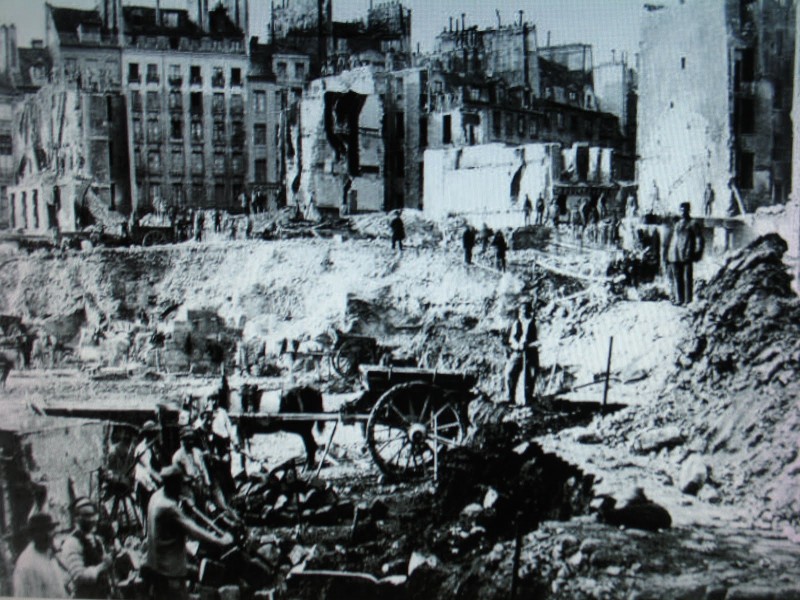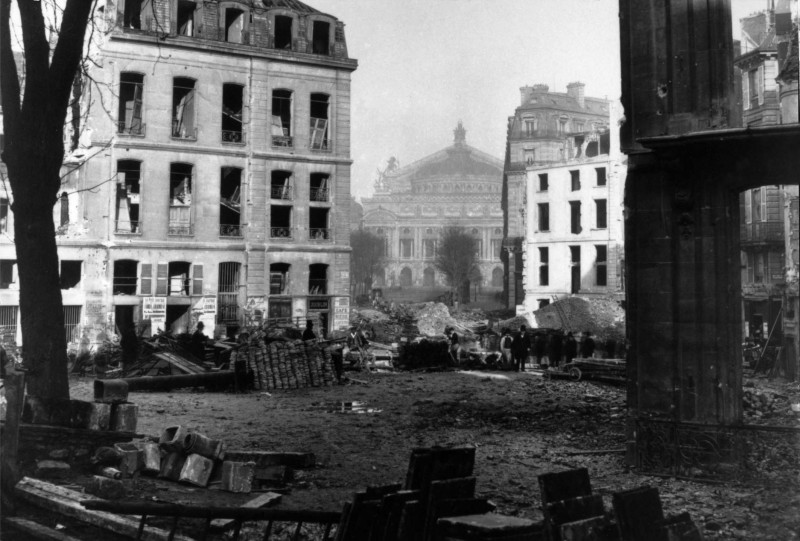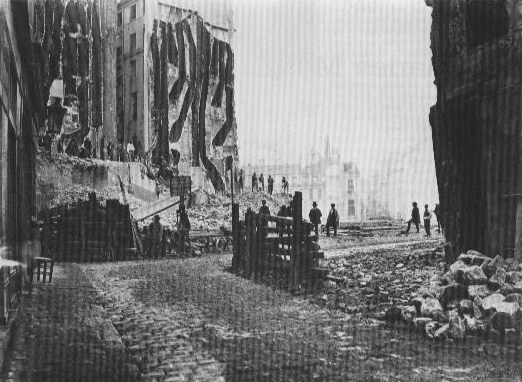
Jusqu’au milieu du XIXe siècle, l’endroit était constitué d’un tissu de ruelles insalubres et mal famées. Fidèle à ses préceptes, Haussmann prévoyait de raser l’ensemble pour y construire une Avenue Napoléon entre le Louvre et l’endroit où la Rue de la Paix rejoint le Boulevard des Capucines. Les travaux commencèrent très mollement dès 1854 aux abords du Louvre, pour s’interrompre en 1870 après la chute de l’Empire. La construction de l’Opéra Garnier en 1875 à l’extrémité du tracé, offrit un second souffle à l’avenue qui sera achevée en 1879.
Opened up between 1876 and 1879, the Avenue de l’Opéra linked the grand square in front of the Opera Garnier to the Palais Royal. This area had previously been occupied by two small hills, the Butte aux Moulins (Hill of the Windmills) and the Butte Saint Roch, which had already been partly levelled in 1615. Until the mid-nineteenth century the area was a maze of unsanitary and disreputable side-streets and laneways. True to form, Hausmann decided to demolish a straight line right though them all so as to create an ‘Avenue Napoleon’ between the Louvre and the junction of Rue de la Paix and Boulevard des Capucines. Work started at a slow pace in 1854 on the Louvre side, halting in 1870 with the fall of the Empire. The construction of the Opera Garnier in 1875 at the other extremity of the planned route, gave a second wind to the avenue, which was finally completed in 1879.
LOCALISER / LOCATE












